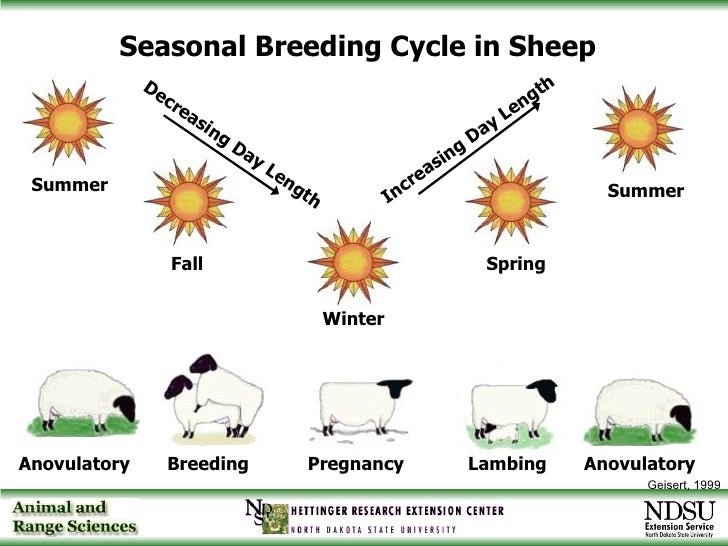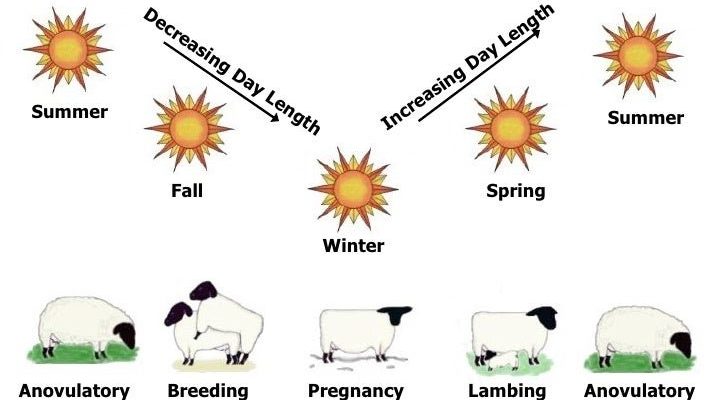
Honestly, if you’re new to this, it might seem overwhelming at first. You might be wondering how to tell if a sheep is in heat or what to do during the gestation period. Don’t worry! We’re going to break it down step by step, with friendly tips and real-life examples that will help you along the way. Let’s dig into the key aspects of breeding sheep, from understanding their heat cycles to providing care during lambing.
Understanding Sheep Heat Cycles
Breeding begins with recognizing when a ewe is in heat. Sheep generally have a seasonal breeding cycle, which means they breed during specific times of the year. Typically, ewes cycle approximately every 17 days during the breeding season, which usually lasts from late summer to early winter.
You might notice certain behaviors during this period. For instance, a ewe in heat may become more vocal and may seek out attention from rams or other ewes. This is her way of saying, “Hey, I’m ready to mate!” It’s like the sheep version of sending out a dating signal. Keeping notes on your flock can help you track these cycles better, especially if you have several ewes to monitor.
When considering breeding, here are a few signs that indicate a ewe might be in heat:
- Increased restlessness and movement
- More vocalizations
- Frequent tail lifting or wagging
- Attracting the attention of rams
Paying attention to these signs not only assists in successful breeding but also ensures that you don’t miss the prime opportunity for conception.
The Gestation Period: What to Expect
Once breeding occurs, it’s important to understand the gestation period, which typically lasts around five months. During this time, the ewe’s body undergoes significant changes as it prepares to give birth to healthy lambs. It’s like waiting for a new season to arrive; the anticipation builds!
During gestation, proper nutrition is crucial. Ewes need a balanced diet rich in vitamins and minerals to support both their own health and the development of the lambs. Think of it as preparing a delicious meal that fuels growth—it’s about the right ingredients!
Here are some key nutritional needs during this time:
- Increased protein intake for muscle development
- Calcium and phosphorus for strong bones
- Adequate energy sources to maintain weight
You might also want to monitor the ewe’s body condition. If she becomes too thin or overweight, it can lead to complications during lambing. So, keeping her healthy is really about balancing her diet and overall care.
Preparing for Lambing
As the time for lambing approaches, you’ll want to prepare a safe and comfortable environment for the ewe. This is where the magic happens! Ideally, ewes should have a lambing pen in a calm, dry area, away from the hustle and bustle of the farm. Think of it as setting up a cozy nursery.
You should also keep an eye on the due date. Knowing when to expect lambs can make a big difference. Some signs that lambing is near include:
- Swelling and relaxation of the vulva
- Increased nesting behavior
- Restlessness and pacing
Having lambing supplies on hand is a smart move. Consider gathering items like clean towels, iodine for disinfecting the umbilical cord, and possibly a lambing kit with essential tools. This preparation will help you respond quickly and effectively during the birth.
Care During and After Lambing
When the moment arrives, the ewe will go through labor, which typically lasts between one to three hours for most sheep. During this time, it’s essential to offer support and minimal interference. If all goes smoothly, the ewe should give birth to one or more lambs effortlessly.
Once the lambs are born, they’ll need immediate attention. They should be dried off to help regulate their body temperature, especially in cooler weather. You might be surprised at how quickly they find their feet and start nursing. Here’s why that first milk, known as colostrum, is crucial—it’s packed with antibodies that protect the lamb from diseases.
After lambing, it’s important to monitor both the ewe and her lambs for any signs of complications. You’ll want to check that the ewe is passing the placenta and that the lambs are nursing well. If problems arise, don’t hesitate to call a vet. It’s better to be safe than sorry!
Nurturing Young Lambs
As the lambs grow, they’ll require proper care and nutrition. For the first few weeks, they mainly rely on their mother’s milk. However, as they start to explore, it’s a good idea to introduce solid foods. Think of it like weaning a child off milk and introducing them to a well-balanced meal.
Lambs should start receiving a mix of hay, pasture, and some grain as they get older. This balanced diet encourages healthy growth. It’s also important to make sure they have access to clean water at all times.
Socialization is another key aspect of raising lambs. They learn a lot from interacting with their mother and siblings. Plus, being in a flock helps them develop better social skills as they grow up. You might find them playing together, which is a joy to observe!
Common Challenges and Solutions
Like any farming experience, breeding sheep can come with its challenges. You might encounter difficulties like ewes rejecting their lambs or complications during delivery. Let’s explore some common issues and how you can tackle them.
One common problem is ewe rejection, where a mother may not recognize or accept her lambs. This can happen for various reasons, including stress during lambing. If this occurs, you can try to intervene by helping the lambs nurse or even using a technique called “fostering,” where you introduce them to another ewe with lambs.
Another issue might be lambing complications, such as dystocia, where the lamb has difficulty coming out. If you notice that a ewe is in labor for more than two hours without producing a lamb, it’s time to step in and check on her. You may need to call a vet for assistance if things don’t progress.
Remember, patience is key. With time and practice, you’ll learn to navigate these challenges effectively.
Breeding sheep is as rewarding as it is complex. By understanding heat cycles, gestation, and lamb care, you’re not just ensuring successful breeding; you’re fostering a thriving environment for your flock. It may take some time to get used to the rhythms of sheep breeding, but each step offers its own learning experience.
As you embrace this journey, keep in mind the importance of being attentive and flexible. Every flock is unique, and the bond you form with your sheep can lead to a rewarding and fulfilling farming experience. So grab that cup of coffee, sit back, and enjoy the beautiful process of raising sheep and watching the next generation thrive!

